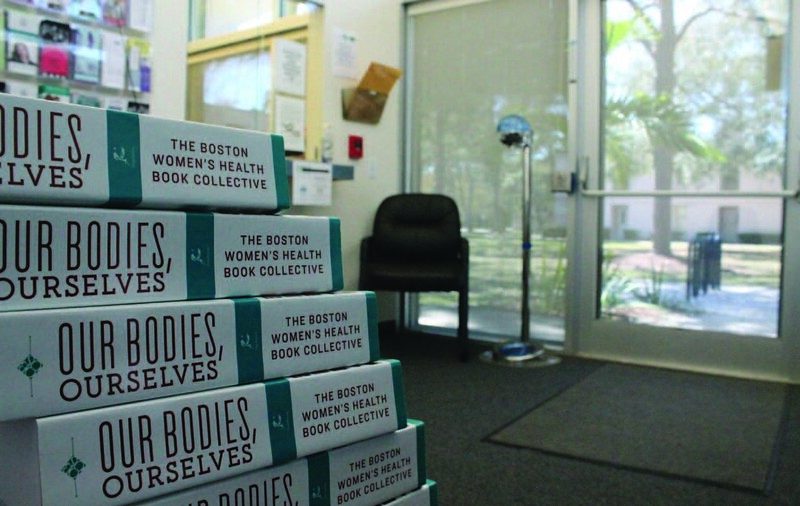
Evolved from what was once a 38-cent booklet published on newsprint to a 928-page tome of feminine health in its 9th evolution, Our Bodies Ourselves is an exhaustive compendium of women’s health information. The newest edition was distributed to students at the Counseling and Wellness Center (CWC) in preparation for Judy Norsigian, co-author of the book. Our Bodies spokesperson’s brown bag discussion, includes new chapters on gender identity and sexual orientation.
The discussion of Our Bodies, Ourselves that Boston Women’s Health Book Collective founder Norsigian conducted with students during the forum on Feb. 25 had an overwhelmingly positive response.
“Everyone [in my class] was so surprised at how down to earth and how communicable [Norsigian] was and how much information she knew,” first-year transfer Emily Janas said. “She didn’t even have to look down at her notes.”
In her dialogue with students Norsigian greatly emphasized the history of feminist activism that surrounds the book as well as the long-term results of its publishing. Norsigian, a representative of a second-wave feminist point of view, pleased students like first-year Rowan Holop, who found the information about the movement that begot such a revolutionary book valuable.
“I think it’s important to have that historical background,” Holop said. “I can read about it, but having someone there to talk about it is a much different experience … I think it’s cool that someone from the second-wave is interested in the opinions of younger [people]. I don’t think the work is done.”
Norsigian confirmed in an email interview that the dialogue with the students was ultimately fruitful because it allowed her to speak to the voices of the next generation that will be forming the Our Bodies, Ourselves agenda.
“I found that the new chapter on gender identity and sexual orientation seems quite relevant [to students],” Norsigian said. “And I also think that the whole array of environmental concerns warrants much more attention – global warming and climate change in particular. This is really where we need a much stronger inter-generational movement that will ultimately achieve the political power that we still need.”
However, the collaborative efforts of the talk did not only yield praise for the book, which was still met with some critiques.
“[Norsigian] mentioned that [Our Bodies, Ourselves] did not have a section on ability because they wanted to spread information regarding ability evenly throughout all of the sections,” Holop said. “I thought that was interesting that they chose to have a specific section to talk about gender … I know that this is the first time that they are including anything like [the chapter on gender] so I’m not disgruntled with the section – I thought it covered the material adequately.”
Questions also arose regarding the issue of gender and the book’s label as a book specifically about women’s health – an issue for those who might be helped by the book who do not identify within the gender binary.
“I know [Norsigian] said that they include stuff about men now, so maybe it will move towards being a book about bodies in general. I think it grew out of the need to be only about women’s bodies because there were no information about women’s bodies … I think maybe the book is changing slower than the people are.”
“Well, I don’t think it’s as radical as some New College students would like to see,” second-year Lindsey Jilk said of the women’s health handbook. “But the book has done – and is doing – a lot of good in just being a resource for people. It’s not all encompassing. It has its weaknesses, but in the end it is a really informative book that has helped a lot of people and continues to teach people stuff.”
